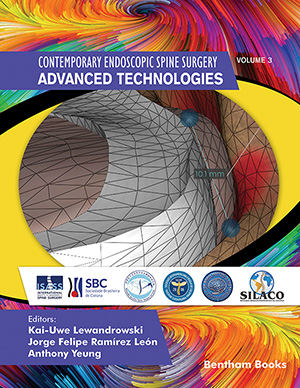Abstract
Deformity correction is an integral part of spinal surgery. For patients with
painful coronal and sagittal plane deformity, correction to restore lumbar lordosis and
scoliosis is the surgical treatment goal. Traditional open spinal surgery techniques are
associated with wound problems, long-recovery times, high blood loss, and many other
disadvantages compared to their more modern minimally invasive counterparts. While
the minimally invasive percutaneous placement of pedicle-screw-rod constructs has
been tried, anterior column release and fusion techniques to facilitate deformity
correction often require excessive surgical exposures to gain access to the anterior
column. This chapter presents a percutaneous transforaminal endoscopic interbody
decompression and fusion technique to release the anterior column and facilitate
deformity correction with the posterior column pedicle screw constructs. When
combined with percutaneous minimally invasive screw placement, the patient's overall
burden by the long-segment spinal fusion procedure can be significantly lowered by
simplifying the entire procedure and carrying it out through small percutaneous
incisions. An illustrative case is presented to demonstrate the utility of endoscopically
assisted interbody fusion in scoliosis patients.
Keywords: Coronal plane deformity correction, Endoscopic surgery, Interbody fusion, Long-segment, Percutaneous pedicle screws, Scoliosis.






















